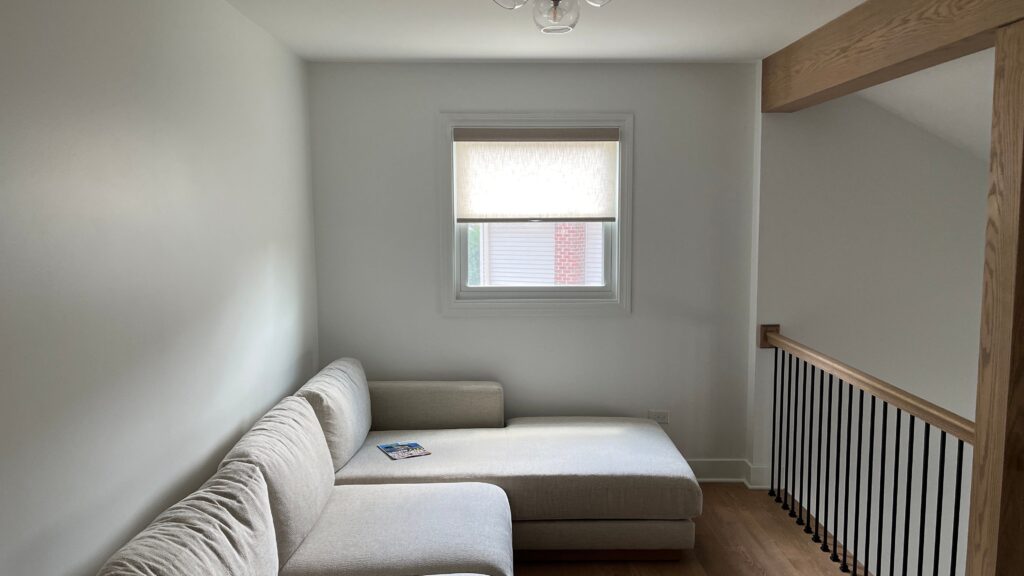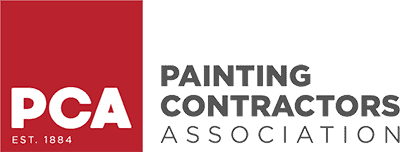Premium paints are engineered to last longer, resist fading, cover better, and maintain a smoother finish over time. But there’s a catch—premium paint alone doesn’t guarantee success. The final result depends just as much on surface preparation, application techniques, and environmental conditions as it does on product quality.
This matters because painting isn’t just about looks—it’s about protecting your investment. Paint shields your home from UV rays, moisture, and daily wear and tear. A poor-quality job may look fine at first but often deteriorates quickly, leading to peeling, chalking, or fading.
In this blog, we’ll break down:
-
How cheap and premium paints compare in longevity, coverage, and durability
-
Why skipping prep work undermines even the best products
-
What common application mistakes cost homeowners in the long run
-
The real cost vs. value equation of paint quality
-
Actionable homeowner tips to protect your investment
Why Paint Quality Matters for Homeowners

The quality of paint you choose has a direct effect on both appearance and durability.
Lifespan differences are clear:
-
Premium paints typically last 8–12 years indoors and 7–10 years outdoors.
-
Cheap paints often last only 2–4 years indoors and 1–3 years outdoors before showing signs of wear.
The difference doesn’t just show up in time, but in costs:
-
Hidden costs of cheap paint include frequent repainting, wasted materials, and added labor hours.
-
Emotional costs also creep in—disappointment with the finish, frustration with early failure, and stress from having to schedule repeat projects.
-
Warranties can become invalid if low-quality paint is used, or if proper prep/application steps are skipped. Premium paints, when applied correctly, often come with strong guarantees that protect homeowners.
In other words, paint quality isn’t just about looks—it’s about time, money, and peace of mind.
Skipping or Inadequate Surface Preparation
Why Prep Work Is Critical
Surface preparation is the foundation of a successful paint job. Even the most advanced premium paints will fail if applied over dirty, damp, or poorly prepped surfaces. Prep is what ensures adhesion, smoothness, and long-term performance.
Typical prep steps include:
-
Cleaning and de-greasing surfaces
-
Sanding or scraping loose paint
-
Caulking seams and joints
-
Priming patched or porous areas
-
Masking trim, windows, and fixtures
Skipping these steps may save a day of work—but it nearly guarantees peeling, cracking, blistering, or an uneven finish down the road.
Product Recommendations for Prep
-
Primers: Zinsser Cover-Stain, Sherwin-Williams Multi-Purpose Primer
-
Caulks/Sealants: Sashco Big Stretch, SherMax Elastomeric
-
Sanding Tools: Festool orbital sanders with HEPA vacuum (keeps dust controlled)
-
Masking Supplies: 3M Painter’s Tape, professional-grade drop cloths
Lesson: Skipping prep work undermines paint quality, no matter how premium the brand.
Paint Quality: Cheap vs. Premium

How Paint Quality Affects Longevity
The real difference between cheap and premium paint lies in the formula. Cheap paints cut corners on ingredients, while premium paints maximize them.
-
Cheap paints:
-
Fewer solids (less thickness per coat)
-
Lower-quality binders (weaker adhesion)
-
Cheaper pigments (faster fading, weaker color retention)
-
Lower scrub resistance (walls mark and stain easily)
-
-
Premium paints:
-
High solids content = thicker coverage with fewer coats
-
Advanced pigments = stronger UV resistance and color stability
-
Superior binders = stronger adhesion and flexibility to resist cracking
-
Better scrub resistance = washable surfaces that last
-
Product Comparison Table
| Feature | Premium Paint (Benjamin Moore Aura, Sherwin-Williams Duration) | Cheap Paint (Big Box Generic) |
|---|---|---|
| Coverage | 250–400 sq. ft./gal | 150–250 sq. ft./gal |
| Durability | 8–12 years | 2–4 years |
| Fade Resistance | High | Low |
| Scrub Resistance | Excellent | Poor |
| VOC Level | Low | Varies, often higher |
Best Practices
-
Always check that quotes specify paint brand, product line, number of coats, and primer.
-
Verify manufacturer warranties—premium lines often guarantee performance when properly applied.
-
Match paint type to environment: high UV areas, humid climates, or high-traffic interiors may require specific formulas.
Improper Application
Common Application Mistakes
Even the best paint will fail if applied incorrectly. Some of the most common mistakes include:
-
Using the wrong brush or roller type
-
Over-thinning or poor mixing
-
Applying too few coats
-
Painting in high humidity, extreme temperatures, or on damp surface
Homeowner Tips
-
Confirm with your painter that the number of coats matches manufacturer recommendations.
-
Ask about environmental conditions—premium paint should not be applied below 50°F or during heavy humidity.
-
Ensure painters follow proper mixing and thinning guidelines. Skipping these can void warranties.
Cost vs. Value: Is Premium Paint Worth It?
Calculating Long-Term Costs
| Factor | Cheap Paint | Premium Paint |
|---|---|---|
| Material Cost | Low upfront | Higher upfront |
| Labor Cost | Higher long-term (frequent repaints) | Lower over time |
| Repainting Frequency | Every 2–4 years | Every 8–12 years |
| Warranty Coverage | Limited | Full if applied correctly |
On paper, cheap paint looks like a bargain. In practice, it often doubles labor and material costs over a decade. Premium paint may cost 20–40% more upfront but delivers significant long-term savings.
How Homeowners Can Protect Their Investment

Questions to Ask Before Hiring a Painter
-
“Which paint brand and line do you recommend for my surfaces?”
-
“How many coats and what type of primer are included?”
-
“Do you follow manufacturer application guidelines for warranty compliance?”
-
“Are you licensed and insured?”
Checklist for a Successful Paint Job
-
Verify prep steps are included in the scope of work.
-
Confirm paint brand, product line, and coat count.
-
Ensure painter experience with similar surfaces.
-
Get contracts that specify warranty coverage and cleanup responsibility.
People Also Ask
Q: Does premium paints really last longer than cheap paint?
Yes. Premium paints use higher solids, superior binders, and advanced pigments that extend lifespan and resist fading.
Q: Can cheap paint ever be a good choice?
Only for short-term projects, low-traffic areas, or rental turnovers where longevity isn’t important.
Q: How many coats of paint should I apply?
Most surfaces need 2–3 coats. With premium paints, same-color repaints may only need one.
Q: Does primer make a difference?
Absolutely. Primer ensures adhesion, prevents stains or repairs from bleeding through, and improves coverage.
Q: How do environmental factors affect paint performance?
Moisture, UV rays, extreme heat, and freezing cycles all reduce paint durability—making premium products even more valuable in harsh climates.
Invest Wisely for Long-Lasting Results
Premium paints consistently outperform cheap paints in longevity, coverage, and finish. But buying premium isn’t enough—success also depends on prep work, proper application, and the right environmental conditions.
Cheap paint can save money upfront but often costs more in the long run. Homeowners should prioritize paint quality, preparation, and professional application to protect their homes and maximize long-term value.









